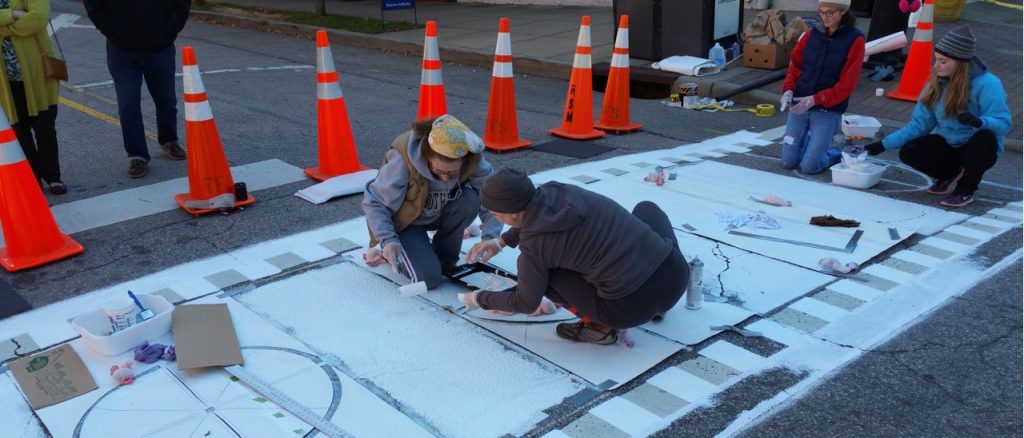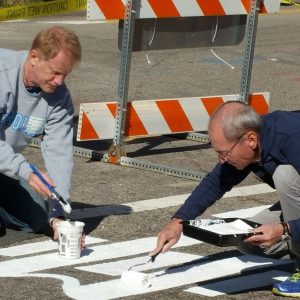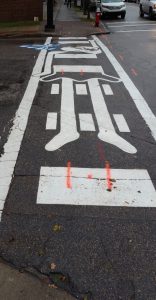
Who do these people think they are?! Why would citizens want to change something that works perfectly well, and has for years! Why waste time and money on something silly like a festival, or art project that will only last a day, week or month? We have bigger issues than worrying about one neighborhood’s wants. We know what’s best for our citizens and they will see it our way, or learn to deal with it.
OK, perhaps that seems a bit extreme and over the top; however, it wasn’t that long ago when municipal government would decide the direction of a whole city without the input of the people, neighborhoods, and the assets in it. Sadly, if you think some of these cities don’t exist anymore, think again. Fortunately, some cities have caught on and seen the light. They now understand the people within the city ARE the difference makers, the creative conquerors, and they should be invited to the table to not only help be the drivers of initiatives, but help create the new initiatives of the cities they live in. However, this means that city agencies are going to have to become much more flexible in a very rules and regulations oriented arena, or else the cities slow to adopt engagement from the communities will see youth and the new wave of companies flock to the cities that are inspiring new ways of looking at… well, everything, a city has to offer. Cities that highlight walkability, unique areas to live, great parks, art, and a city council not afraid to try new things, even the ridiculous, will prosper!
 A recent example of a creative conqueror making a difference in Raleigh, NC just took place in the Glenwood neighborhood. Jim and Donna Belt, two retired patrons in the city, have been trying for the past 10 months to take bland ordinary crosswalks and turn them into art pieces called Cool Walkings. Sounds easy enough: get some paint, a few artists, and make a design on the street. Not so fast. It took looking at the bureaucracy of changing city ordinances, closing streets, several thousand dollars including grants, finding artists and volunteers just to name a few. The city didn’t make it easy for an amazing project to happen in the being stages. If municipalities continue to create hoop after hoop for creative people to jump through, then nothing will get accomplished. City professionals should be finding more creative conquerors and paving the way for people like Donna and Jim, not putting roadblocks in their paths.
A recent example of a creative conqueror making a difference in Raleigh, NC just took place in the Glenwood neighborhood. Jim and Donna Belt, two retired patrons in the city, have been trying for the past 10 months to take bland ordinary crosswalks and turn them into art pieces called Cool Walkings. Sounds easy enough: get some paint, a few artists, and make a design on the street. Not so fast. It took looking at the bureaucracy of changing city ordinances, closing streets, several thousand dollars including grants, finding artists and volunteers just to name a few. The city didn’t make it easy for an amazing project to happen in the being stages. If municipalities continue to create hoop after hoop for creative people to jump through, then nothing will get accomplished. City professionals should be finding more creative conquerors and paving the way for people like Donna and Jim, not putting roadblocks in their paths.
So, how do we find more creative leaders who are willing to push the envelope, not give up when they get a little, or a lot of push back and see a project through to the end?
According to author Peter Kageyama who wrote “For the Love of Cities” and most recently “Love Where You Live,” there are 7 steps to this process:
- Identify the anchor personas: Find the community activists, social entrepreneurs, and connectors who operate as the big fish
 in your cities social pond.
in your cities social pond. - Bring the co-creators together: Get a half dozen to sit down with top city leadership.
- Ask them for help: The next step is a bit unusual, the city is going to ask the co-creators for help. Historically it is people asking the city for help, but in this case the city tapping a new resource.
- Amplify what they naturally do: A deft touch is needed to help by not dictating, but letting the creators tell you what the city can do to help via resources
- Provide them with “other” resources: Waive fees, provide police and fire for events, and help cut through various department bureaucracies.
- Ask them to identify more “lovers” of the city: The next time you call back the co-creators, ask them to bring other like-minded creators. These will be the up and coming individuals.
- Expand the circle: Before you know it you will have 2 dozen co-creators engaged with some sort of capacity building for the city!
The writing is on the wall if a city wants to take it to the next level of community engagement and ownership in the spaces we live. City officials need to embrace creative conquerors, break the old mold of doing business by making it easier for unique ideas to happen, and resolve that they want to take a fresh look of the city through the eyes of amazing people who have so often been over looked. If more cities do this, it will most certainly be a pretty cool space to live in. So come on, what’s your big idea!
Dan – nice report on helping folks be creative in how a city looks through fun public art.
I have one concern: as the story goes, it seems to take the energy and time of a retired couple to get things going, and they were working in a better-off neighborhood. Is there an example from a low-income part of Raleigh of similar creativity and city support?
For example, Charlotte, NC has a neighborhood grants program for neighborhood-based projects. According to information at http://charmeck.org/city/charlotte/nbs/communityengagement/nmg/Pages/aboutNMG.aspx “Organizations are required to match the funds requested. The match must be directly related to the proposed project, and may be in the form of cash, volunteer labor, or in-kind donations (equipment, supplies, professional services, etc.). Neighborhoods in Neighborhood Profile Areas with a median household income no more than $61,650 may be eligible to apply.”
I hope there is a way to “open the door” to whoever is interested, while still being mindful of equity across neighborhoods. What do you think?
Some good murals going into Raleigh. https://www.facebook.com/raleighmuralsproject/
Thanks, Chris. I want to add a link to a recently completed Durham Civil Rights mural – http://www.durham-nc.com/maps-info/black-history/features/civil-rights-mural/ This goes further than Dan Bagley’s focus on regular civic spaces and thinking creatively. It goes to public art – but I like that the mural involved so many volunteers. That is one thing about creativity – capturing both a few people’s vision and energy, but – at its best – being open to wider participation.